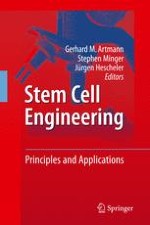2011 | OriginalPaper | Buchkapitel
Endothelial Progenitor Cells and Nitric Oxide: Matching Partners in Biomedicine
verfasst von : Stefanie Keymel, Burcin Özüyaman, Marijke Grau, Malte Kelm, Petra Kleinbongard
Erschienen in: Stem Cell Engineering
Verlag: Springer Berlin Heidelberg
Aktivieren Sie unsere intelligente Suche, um passende Fachinhalte oder Patente zu finden.
Wählen Sie Textabschnitte aus um mit Künstlicher Intelligenz passenden Patente zu finden. powered by
Markieren Sie Textabschnitte, um KI-gestützt weitere passende Inhalte zu finden. powered by
